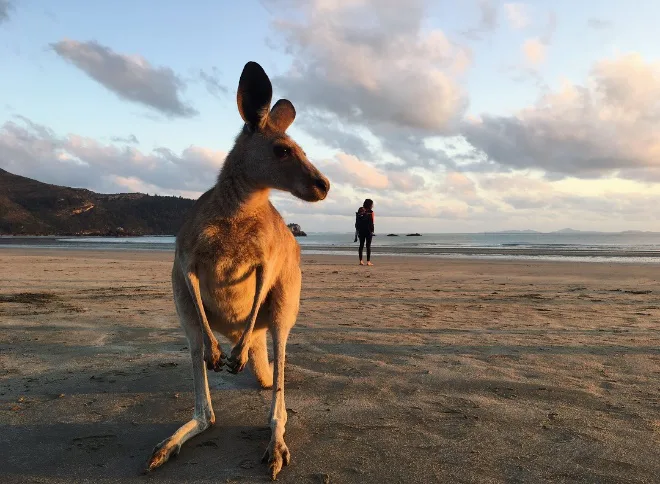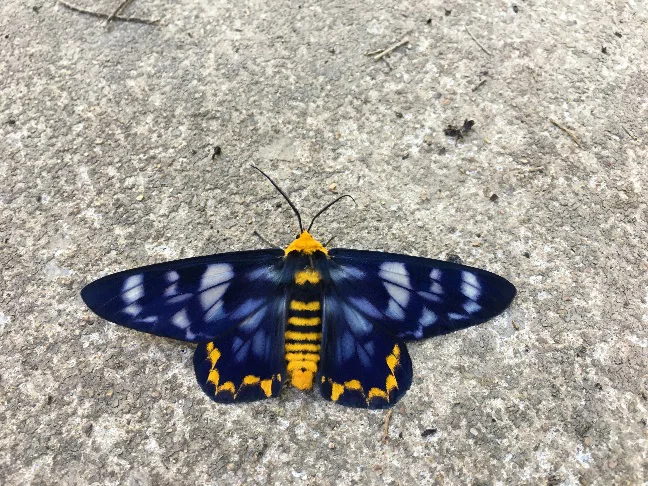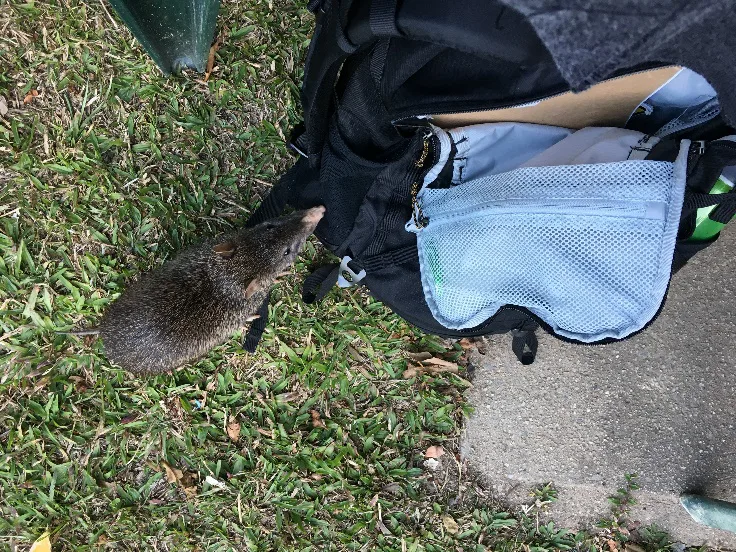
By: Jesse Lewis, M.S.
Wildlife of North Queensland
The Wet Tropics region of North Queensland, Australia is not where you will find your typical forest dwellers like deer, squirrels, and temperate birds. Due to the low seasonal variation and exceptionally high annual rainfall, the tropical rainforests of northern Queensland harness a tremendous amount of biodiversity.
Here at SFS Australia, it is not uncommon to walk from the cabins to the center and have a staring contest with a pademelon or hear the chowchilla chirp its laser beam-sounding call. Being surrounded by such a high diversity of organisms keeps us all in a constant state of wonderment and curiosity as we never know what we might find each day. In the morning, we’re destined to hear the screeching “meowing” of the spotted catbird, but we could also be lucky enough to see a Wompoo Pigeon that often quietly calls out “wompoo” deep in the forest canopy. During lunch, we have few times been graced by the presence of the lace monitor. This sizable lizard creeps its way around the center and flicks out its long, forked tongue to get a bearing on its surroundings, which usually includes a few intrigued students.
Also rare around the center is our lovely local resident, the magnificent amethystine python. This absolute unit is a treasure to find slithering along the edge of the forest floor, or can be found wrapped near the compost bin, where we have now gotten used to greeting this wonder of the rainforest. There is a plethora of other local wildlife that always manages to catch our eye when they decide to flaunt their distinct features near our center like 4 o’clock moths, rainbow lorikeets, Victoria’s riflebirds, rainbow bee-eaters, Sulphur-crested cockatoos, and so much more.
The wildlife we have seen during the program has certainly not been limited to the center. Our excursion to Green Island to see the Great Barrier Reef up close revealed to us life beneath the surface. As we snorkeled above coral, we watched schools of vibrantly colored fish swim right in front of our faces. Sea turtles slowly glided along as we would stop to admire the Christmas tree worms popping in and out of coral. Lucky snorkelers could expect to see small sharks, vibrant starfish, sea slugs, or even rays.
Even in dry environments, we were still able to spot remarkable wildlife. As part of my and Lydia’s homestay experience, our host, a semi-retired ecologist, took us to spot wildlife that typically inhabit eucalypt forests, a drier forest habitat compared to the wet rainforests. We spotted a whopping 30+ species of birds including pale-headed rosellas, scarlet honeyeaters, golden whistlers, and the remarkable golden bowerbird calling outside its bower. Also found in these grassy eucalypt forests were wallabies! We saw a couple galloping wallabies springing around on their long bouncy feet and legs. The most notable wildlife experience of the homestay and my abroad experience so far was the bat exodus in Atherton. Though I only expected to see one or two microbats or flying foxes, we witnessed hundreds of thousands of flying foxes darken the sky for several minutes as they soared out of the trees and flew below the smoky grey clouds.
SFS Australia is an excellent program for students searching for wildlife dissimilar from your typical North American forest ecosystems. Surround yourself with the calls of birds endemic to the wet tropics region and always keep your hiking boots on because you never know what wonders await you until you go out and explore.




Related Posts


